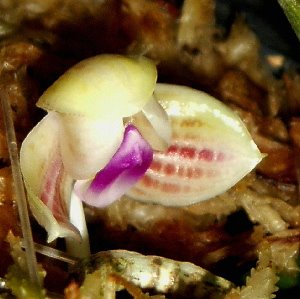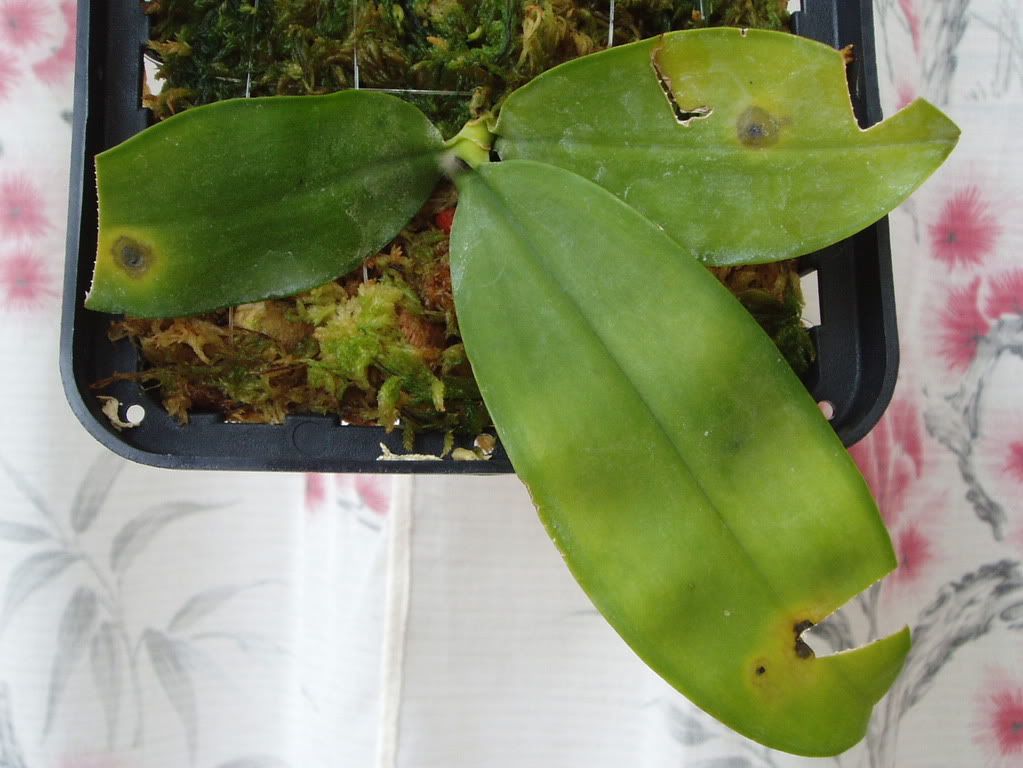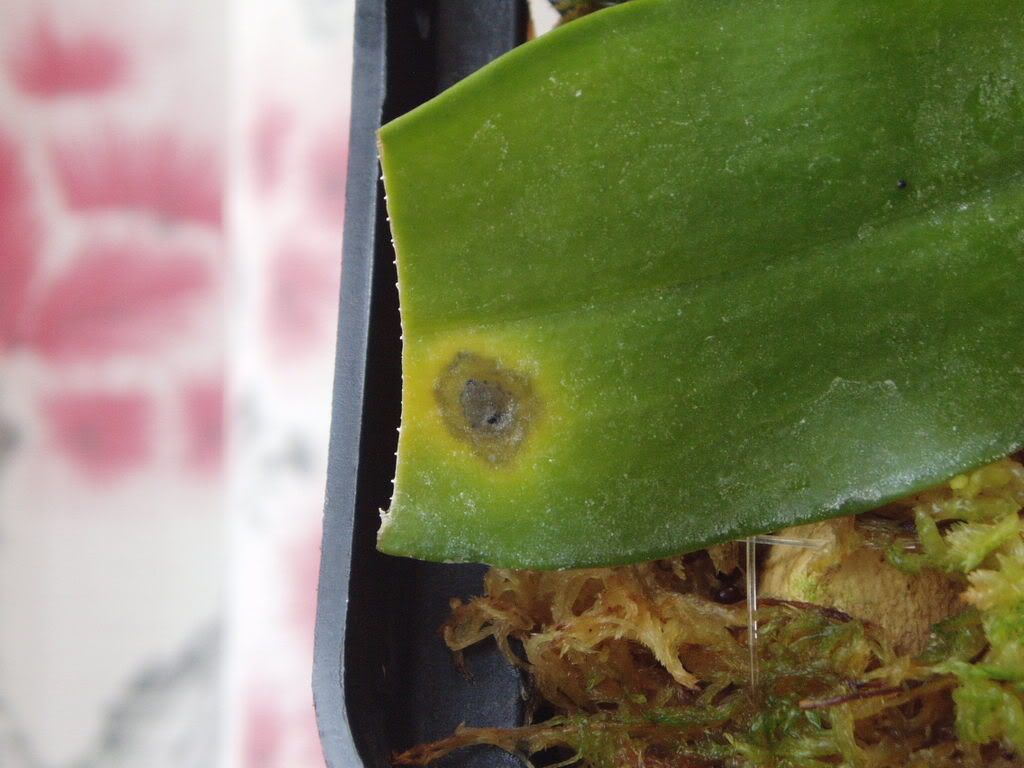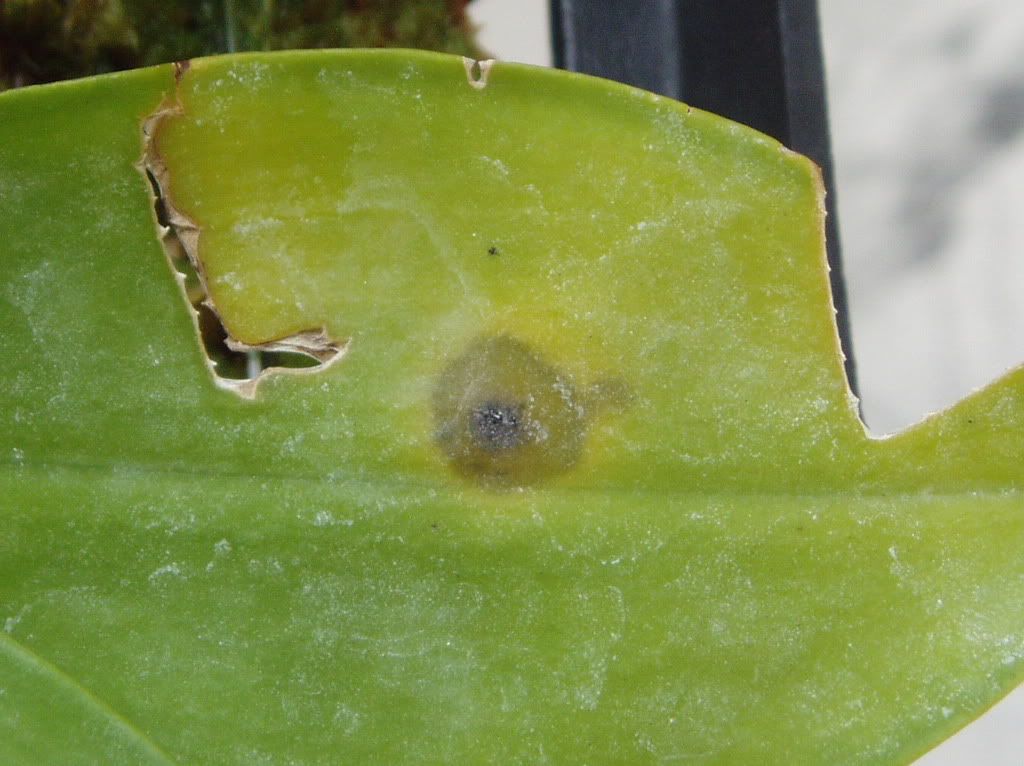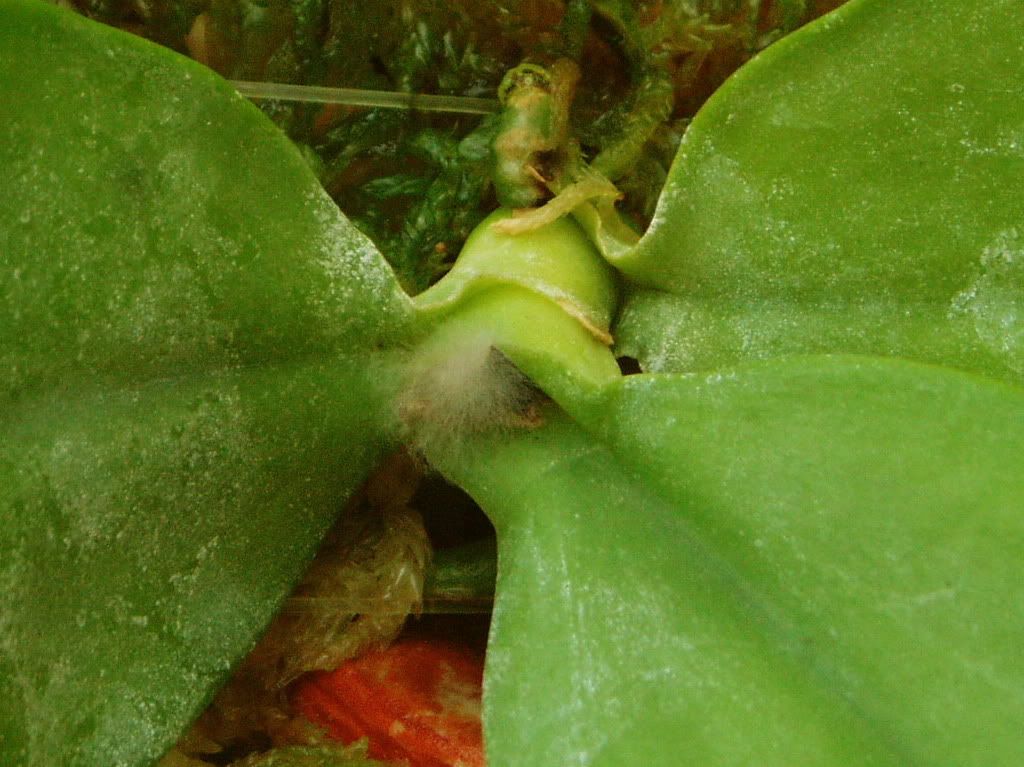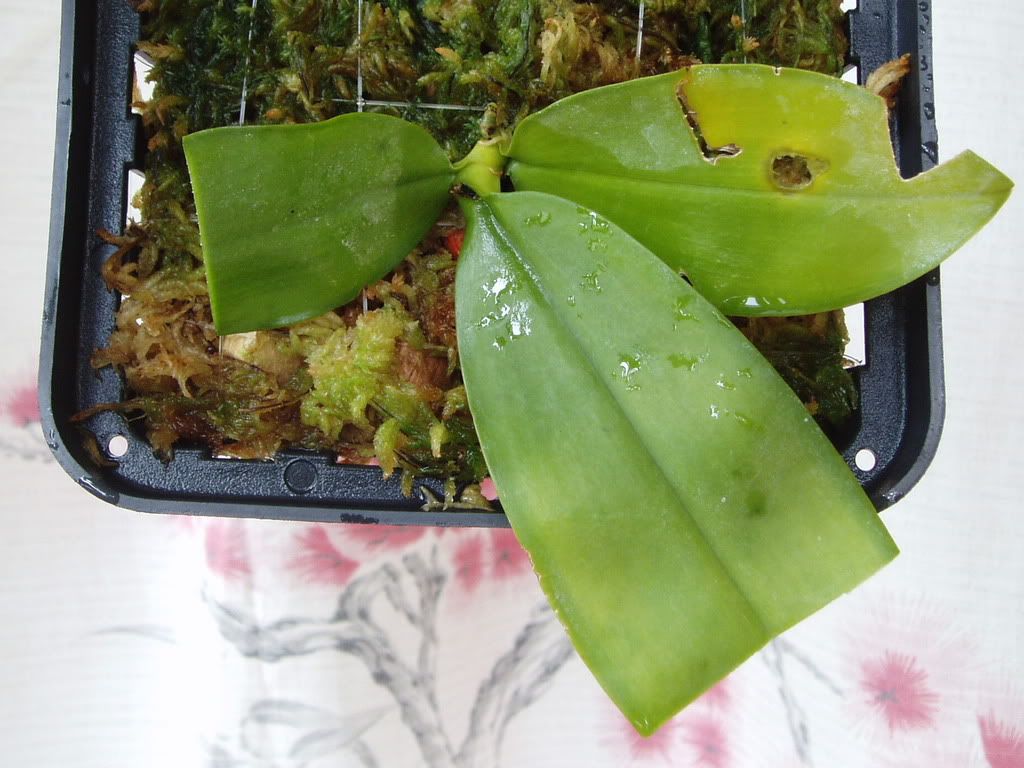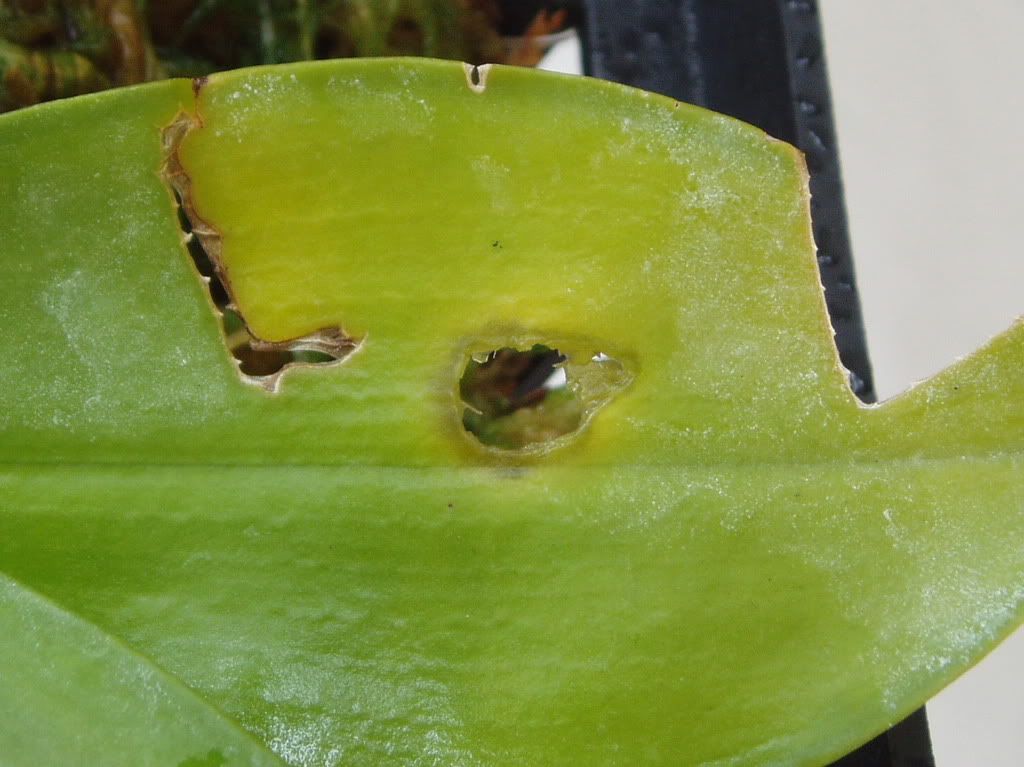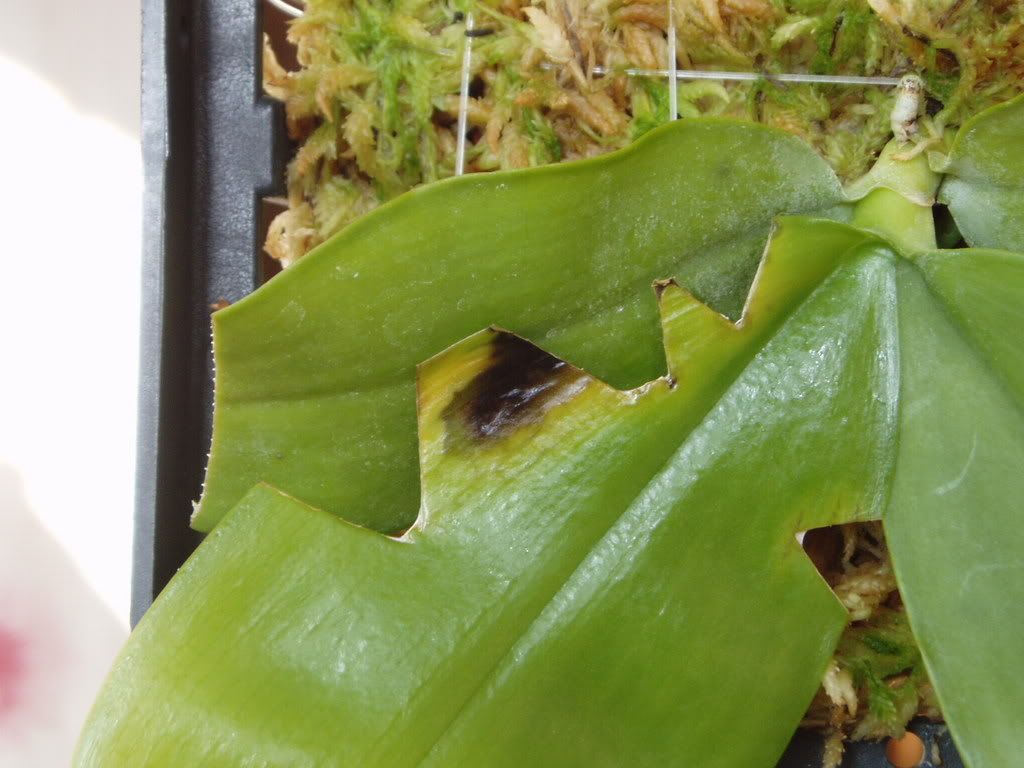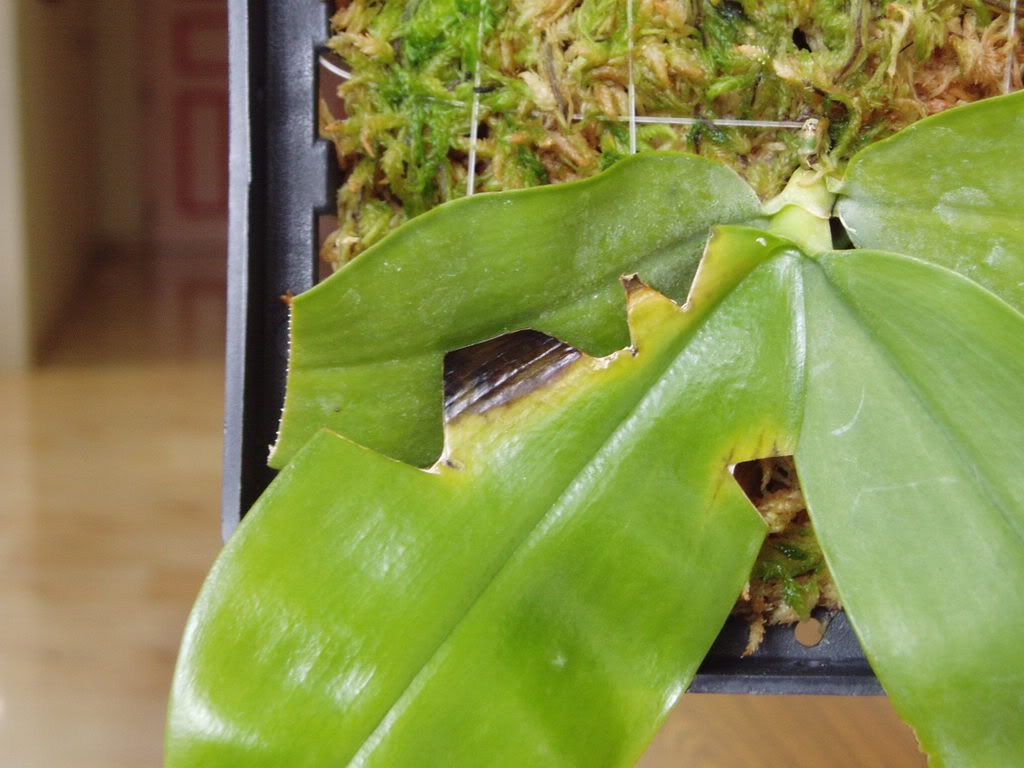August 03, 2007
July 16, 2007
Leaf Rot (4) {Plant 2}
08/07/07
The rot from the youngest leaf has finally spread to the crown area; light brown translucent marks from the rotting tissues in the youngest leaf have traveled across the leaf joint to reach the petiole. The plant showed no sign of sacrificing the youngest leaf that is already rotting badly, thus it had been manually cut away this morning. However, as the leaf region close to the crown is difficult to reach with the scissors, some rotten tissue still remained on the plant. Physan has been applied to crown.
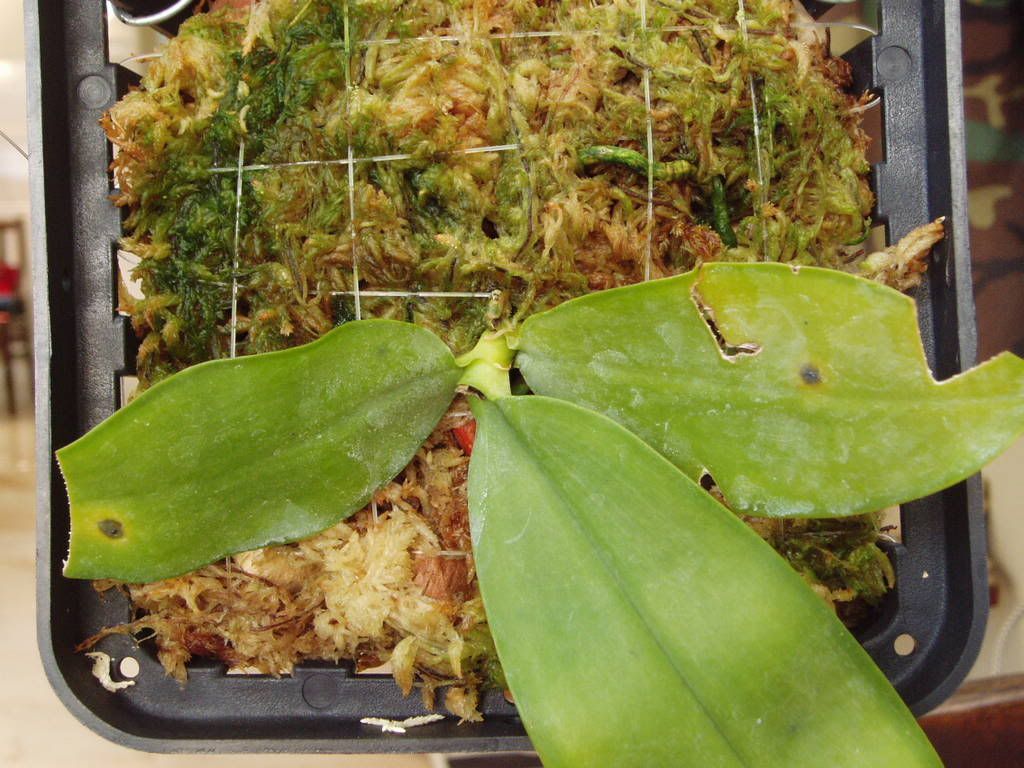

The rot from the youngest leaf has finally spread to the crown area; light brown translucent marks from the rotting tissues in the youngest leaf have traveled across the leaf joint to reach the petiole. The plant showed no sign of sacrificing the youngest leaf that is already rotting badly, thus it had been manually cut away this morning. However, as the leaf region close to the crown is difficult to reach with the scissors, some rotten tissue still remained on the plant. Physan has been applied to crown.
.
.
09/07/07The cut has dried well.
11/07/07
.
.
16/07/07
The remaining part of the trimmed leaf has dried up and dropped off, leaving the dried petiole attached to the plant.


July 05, 2007
Leaf Rot (3) {Plant 2}
21/06/07
A dark (almost black) spot was found in the region of leaf between the cut wedges (see photos below). Unlike the typical wet rot that we usually encounter when water droplets stayed on the leaves for prolonged periods, this spot was almost black in color and did not appear translucent against the light. Furthermore, waterings were done carefully to ensure that the leaf surfaces stay completely dry. Thus, it cannot be concluded whether if this is the usual fungal or bacterial rot. It was also not clear whether the black spot was due to an infection of the cut edges.
.
.
22/06/07
The immediate region of leaf surrounding the dark portion started to turn yellowish.
A suspected rot was also occuring at the cut edge of a nearby wedge. The affected portion seems like a normal wet rot: dirty brown and translucent against the light. However, the speed of spread was very slow. Too slow for wet rot.
.
.
23/06/07
The size of the dark spot has doubled that of yesterday; the rate of spread is very fast. In addition, a translucent region that resembles wet rot can be seen surrounding the dark spot today.
.
.
24/06/07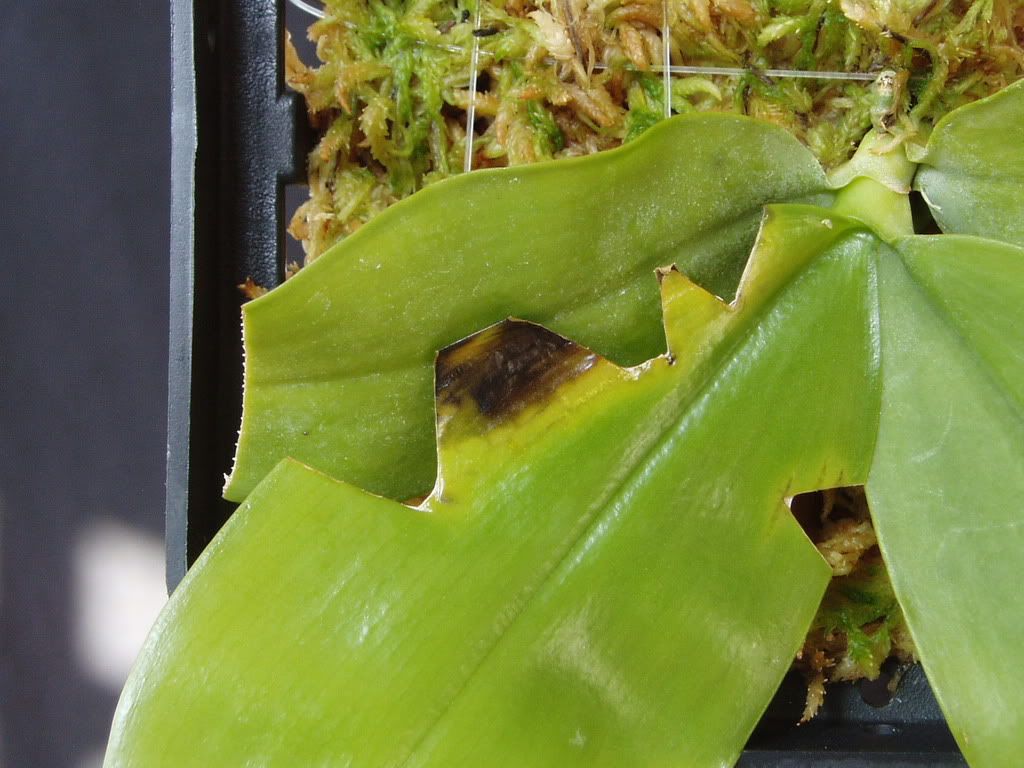 .
..
25/06/07
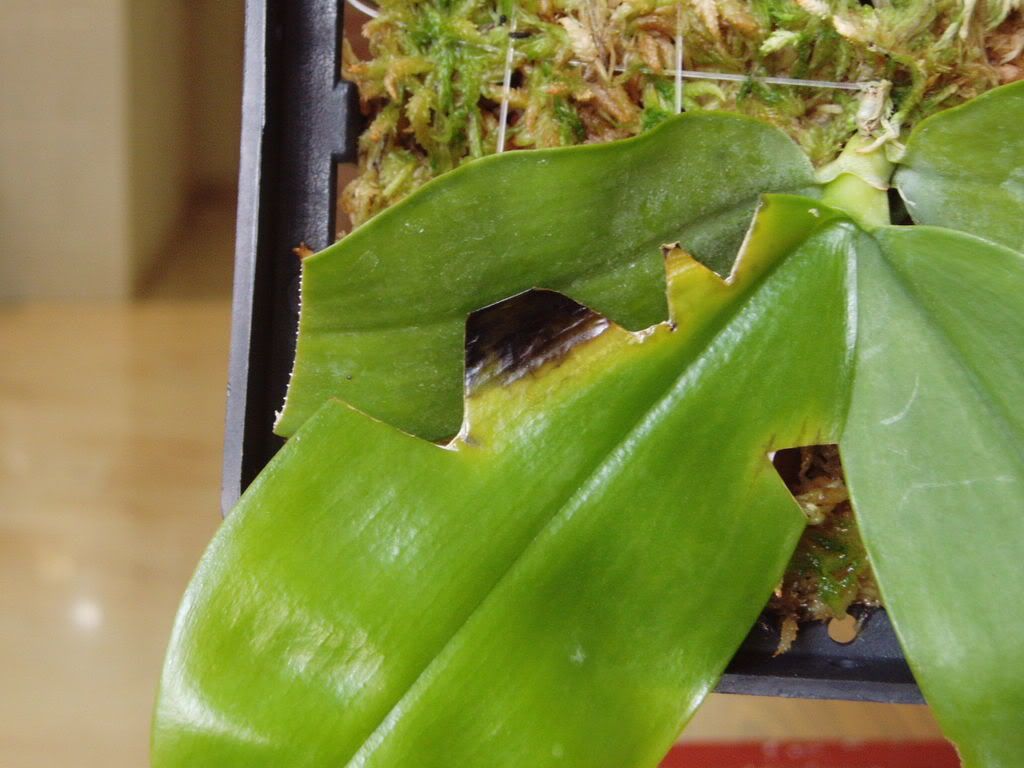
.
.
27/06/07It has been observed the amount of complications from the cut wounds such as rotting from the wounds decreases with increasing age of the leaves. That is, the older the leaves, the lesser the complications arising from the wounds; the younger the leaves, the more the complications. For this plant, the oldest two leaves did not develop any complications from the cut wounds, while the youngest leaf that had yet to harden suffered the most number of complications from these wounds (can be seen from the photos).
I will be using Physan 20 the next time to see if wound infections can be reduced or even totally eliminated. A clean rust-free cutter will also be used for future operations.
.
.
30/06/07

.
.
02/07/07
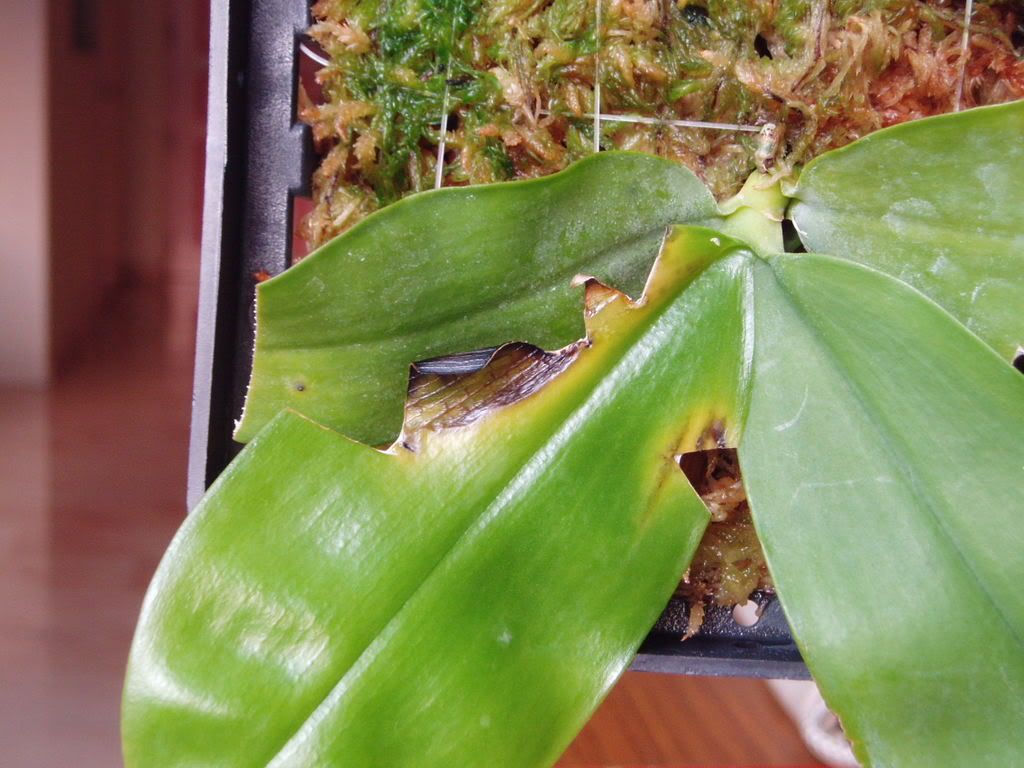
.
.
05/07/07

June 19, 2007
Leaf Rot (2) {plant 2}
Some of the cut edges seemed to be turning yellow at a very slow rate. This may not be a wound infection (though still possible) as the open wounds had dried up well initially and the yellowing only started about 2 weeks after the operation. Furthermore, the rate of yellowing is far too slow for it to be a normal leaf rot.
Below are a few possible reasons that I can think of:
1. Due to rust on the gardening scissors.
2. The blades of the scissors were still warm/hot when the operation was done, thus killing
the healthy tissue. Unlike healthy tissues, the dead tissues may lack natural defense
against fungi and bacteria from entering.
3. The open wounds were not treated with chemicals to ensure that they do not become infected.
4. Transportation of water and nutrients through the veins to regions of the leaves between the cut wedges was disrupted, thus resulting in insufficient water and nutrients for those regions of the leaves to function properly.
5. The plant was stressed and weakened from the transportation into Singapore, change of environment, remounting, etc. Hence, the plant's immunity system is lowered and cannot fight off fungi or bacteria invasion.
6. Yellowing of cut edges is the plant's natural reaction to wedge cutting.
7. Wedge cutting simply do not work.
The plant will not be treated with any chemical for observation of how the yellowing progresses.
Below are a few possible reasons that I can think of:
1. Due to rust on the gardening scissors.
2. The blades of the scissors were still warm/hot when the operation was done, thus killing
the healthy tissue. Unlike healthy tissues, the dead tissues may lack natural defense
against fungi and bacteria from entering.
3. The open wounds were not treated with chemicals to ensure that they do not become infected.
4. Transportation of water and nutrients through the veins to regions of the leaves between the cut wedges was disrupted, thus resulting in insufficient water and nutrients for those regions of the leaves to function properly.
5. The plant was stressed and weakened from the transportation into Singapore, change of environment, remounting, etc. Hence, the plant's immunity system is lowered and cannot fight off fungi or bacteria invasion.
6. Yellowing of cut edges is the plant's natural reaction to wedge cutting.
7. Wedge cutting simply do not work.
The plant will not be treated with any chemical for observation of how the yellowing progresses.
June 02, 2007
Leaf rot (1) {Plant 2}
About 7 tiny spots of rotting tissue were found on the underside of the leaves. Each rotting spot consist of a very dark center spot (< 1 mm across) surrounded by a translucent, yellow-brown, circular region (~ 2 mm across). These spots do not show up clearly on the upper leaf surfaces; the rots started on the underside and have yet to spread through the leaves to reach the upper surfaces.
The leaf rots could be due to be splashes of tiny water droplets from the sphagnum moss surface when it was watered at a steep angle. The electric fan was not used to dry up possible water droplets on the leaves for this particular watering as it was done extremely carefully to avoid water falling on the leaves and I was over-confident that this was the case. The lack of air circulation in my balcony due to closed windows could also have contributed to the rotting.
These rotting spots will be left untouched to be observed for progress.
The leaf rots could be due to be splashes of tiny water droplets from the sphagnum moss surface when it was watered at a steep angle. The electric fan was not used to dry up possible water droplets on the leaves for this particular watering as it was done extremely carefully to avoid water falling on the leaves and I was over-confident that this was the case. The lack of air circulation in my balcony due to closed windows could also have contributed to the rotting.
These rotting spots will be left untouched to be observed for progress.
Subscribe to:
Posts (Atom)
